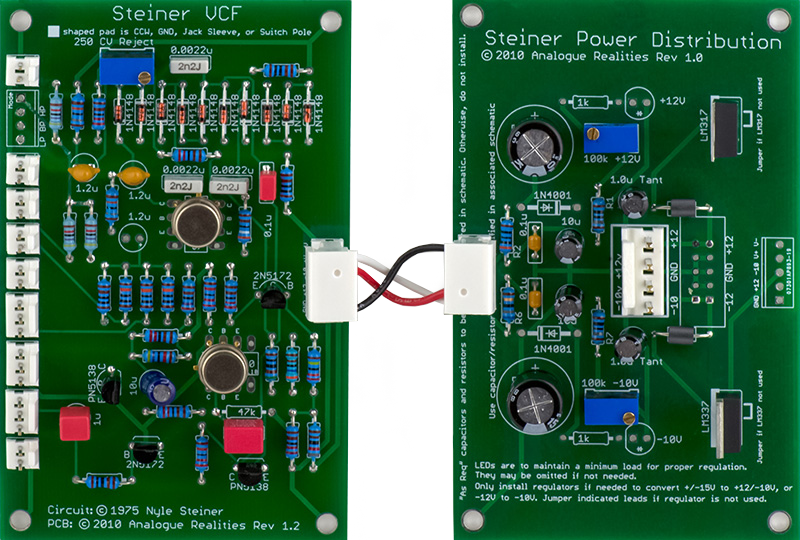 |
CGS-35 Steiner VCF |
|
One of the benefits of doing repairs is I get to try out a lot of different modules and music equipment. I recently repaired a CGS-35 Steiner VCF and was impressed with the filter and resonance characteristics and the multiple inputs. I decided to build one for myself. Ken Stone, David Ingebretsen and Yves Usson did a PCB for this filter design. The YUSynth page gives reference to the original paper by Neil Steiner in the December 6, 1974 issue of Electronic Design. A copy of the article is posted on the YUSynth site SDIY-Archive page.
CGS-35 VCF
As built the filter would not self-oscillate. I tried 2N2907, 2N2907A, and a BC327 transistors. I had to change the emitter resistors in the 2N2222 gain stage to get the resonance control to self-oscillate and had to choose them so at the CCW position it would not oscillate. My final changes were a 1K resistor to ground and a 680R resistor in series with a 5K resonance potentiometer. I then tried the 2N2907, 2N2907A, and a BC327 transistors and decided I liked the 2N2907 best. The Yves Usson version has a 1V/Oct tweak and the notes from John Loffink on the Ken Stone page both mention a 1V/Oct modification but I couldn't get this VCF to scale accurately over any reasonable range.

I made a custom bracket for the PCB and added a small daughter board to buffer the inputs. Each input is 330K so the parallel of three inputs is 100K. The buffers drive the attenuators which go to the normal inputs on the CGS-35.
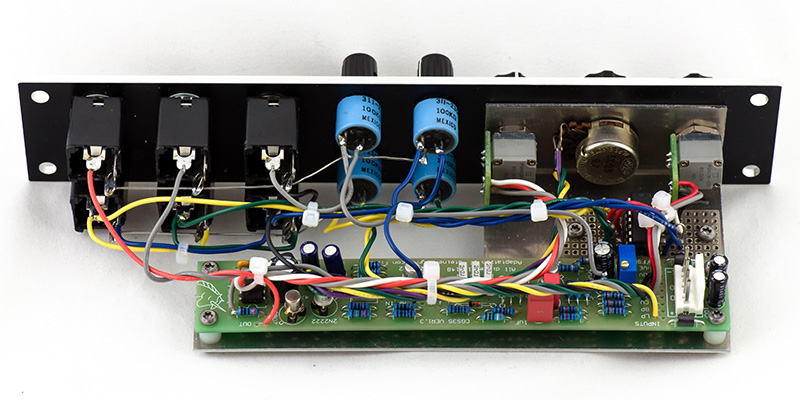
This filter has really wild resonance and reminds me a bit of the Polivoks filter. Here is the low pass input with a pulse and some resonance.

Here is the same low pass input with a pulse and just a bit more resonance.
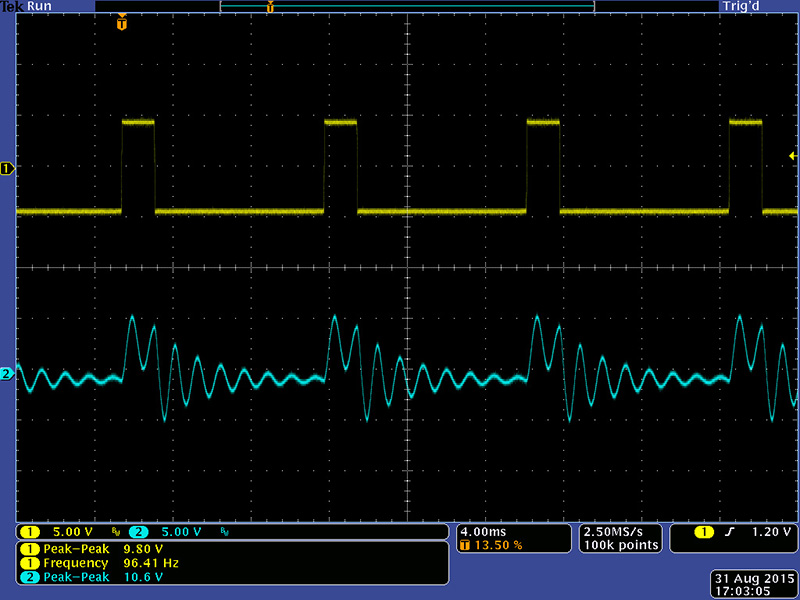
Here is the low pass input with a ramp and some resonance. The resonance control is very touchy.
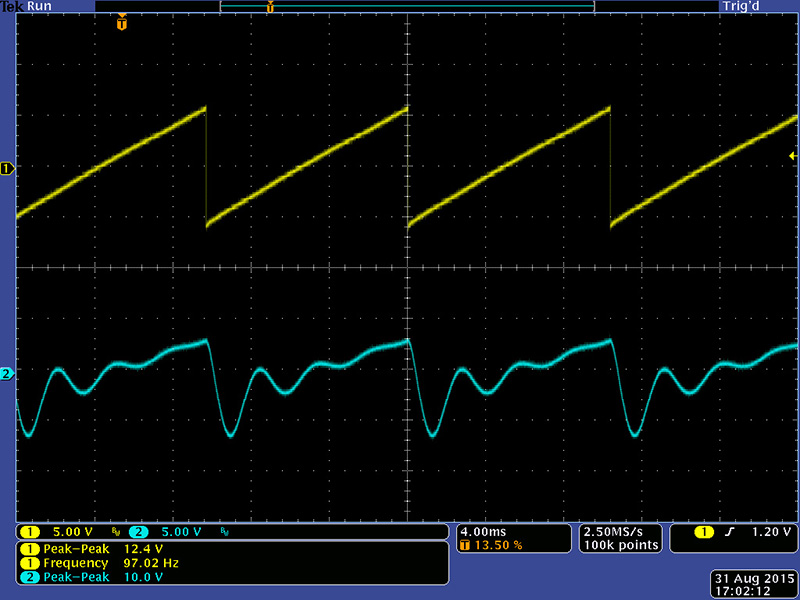
This is the band pass input with a pulse and some resonance. The gain control is needed to keep the filter output at reasonable levels.
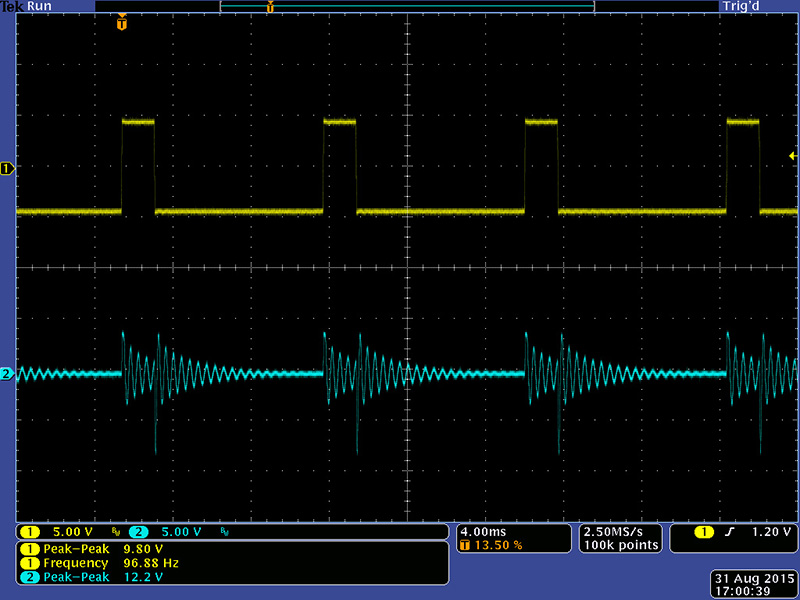
This is the band pass input with a ramp and some resonance.
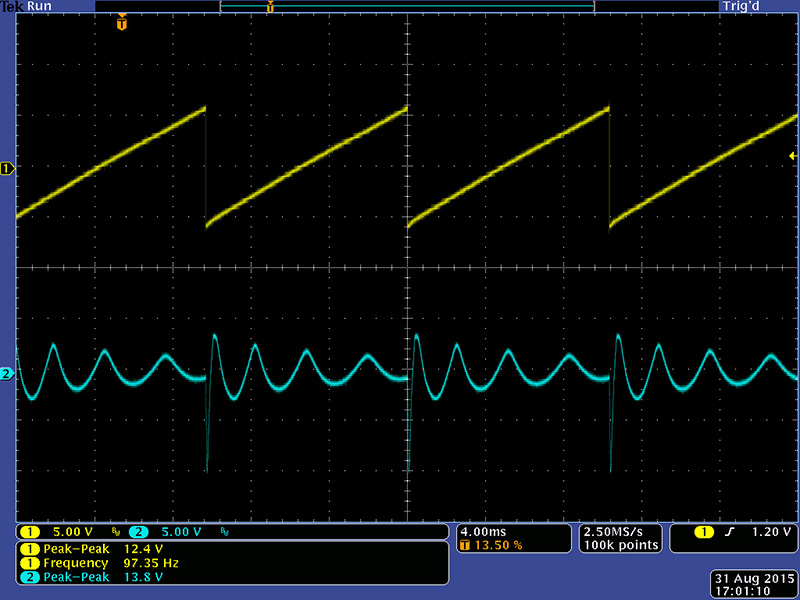
This is the high pass input with a pulse and some resonance.

This is the same high pass input with a ramp and some resonance.
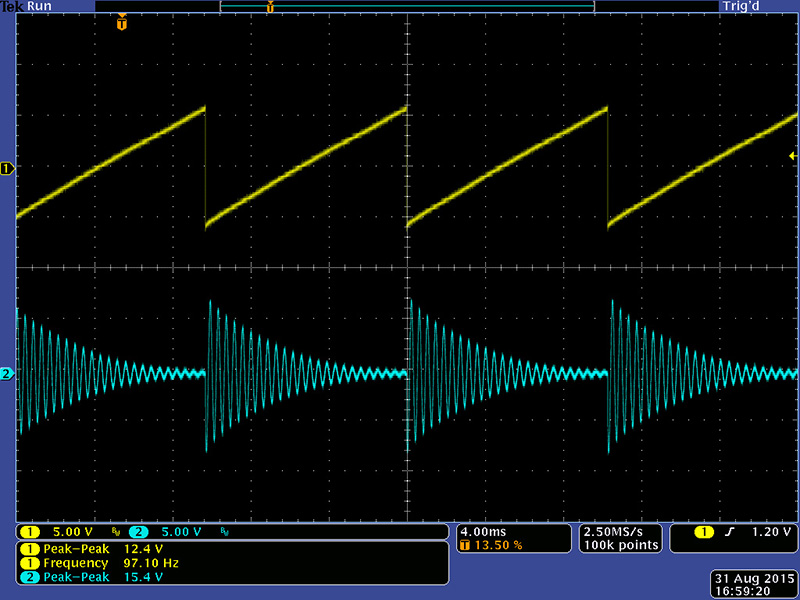
The lowest frequency of self-oscillation is 170 Hz and the waveform is very square. The output level is about right at minimum gain. You can drive the frequency lower with a negative CV.
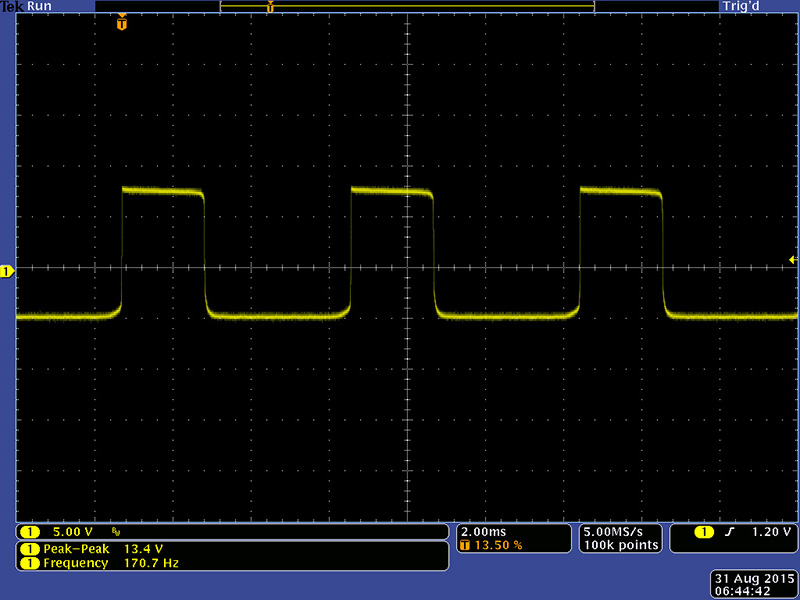
Backing the resonance control off softens the edges and also increases the frequency. At this mid-resonance setting the waveform is starting to appear sine-like and the frequency increases to 300 Hz. The gain setting has been just slightly increased.
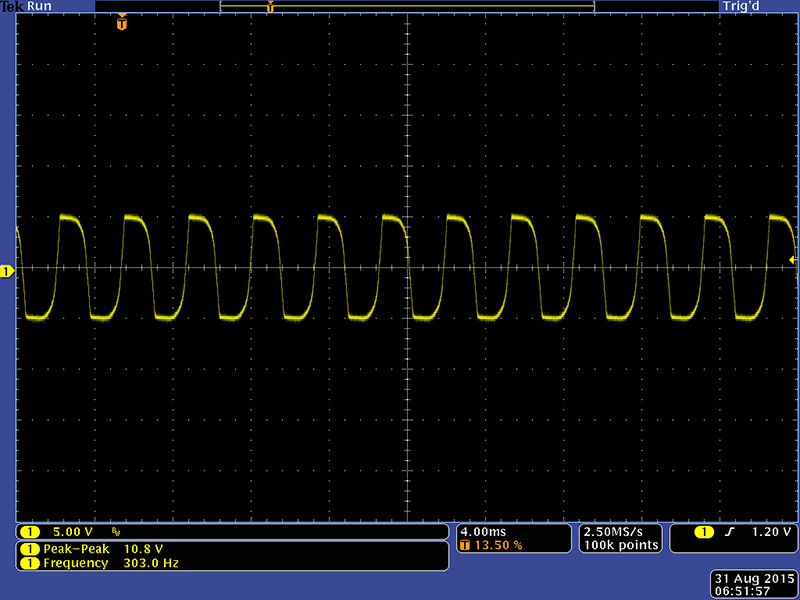
The highest frequency of self-oscillation is 9.2KHz and the output level has dropped significantly so this is at maximum gain.
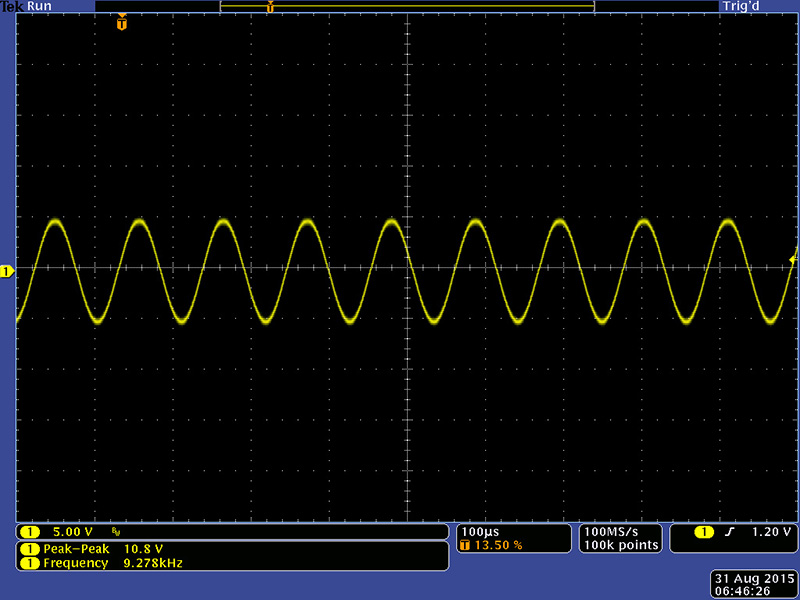
Panel
My first panel design was a 2U width with input attenuators on the three audio inputs and at two FM inputs. I normalled the jacks in a round robin fashion so I can drive all three inputs from a single plug, or I can drive any two inputs together plus a third with two plugs. I had panel space so I decided to add a gain control to vary the op-amp gain from 1 to 25 which is important as the gain varies with frequency in self-oscillation.
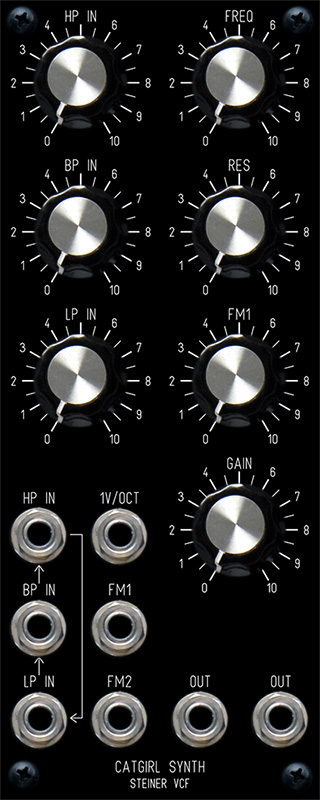
I like the filter, I have a number of filters and couldn't justify 2U of space. I decided to try something different and use tiny knobs (Mouser 506-PKG40B1/8) for the attenuators so it would fit it in 1U. I used these knobs on my MOTM-890 for gain controls and they worked well. My final design fits in 1U, saves space, and is half the cost.

Steiner VCF HPGL FrontPanelExpress design file
David Ingebretsen Version
I also built the two PCB David Ingebretsen version of this filter. I made a few minor modifications to the circuit to add variable gain and allow for all three simultaneous inputs. I changed the trimmer value to 2K and the R1 and R7 to 180R which draws nearly the minimum current from the regulator. With the +12/-10V power there is less headroom when the signals get wild. It worked very well but I didn't have as wide of a frequency range in self-oscillation. I could have tried adjusting this but decided instead to just use the CGS-35 since I liked its performance.
